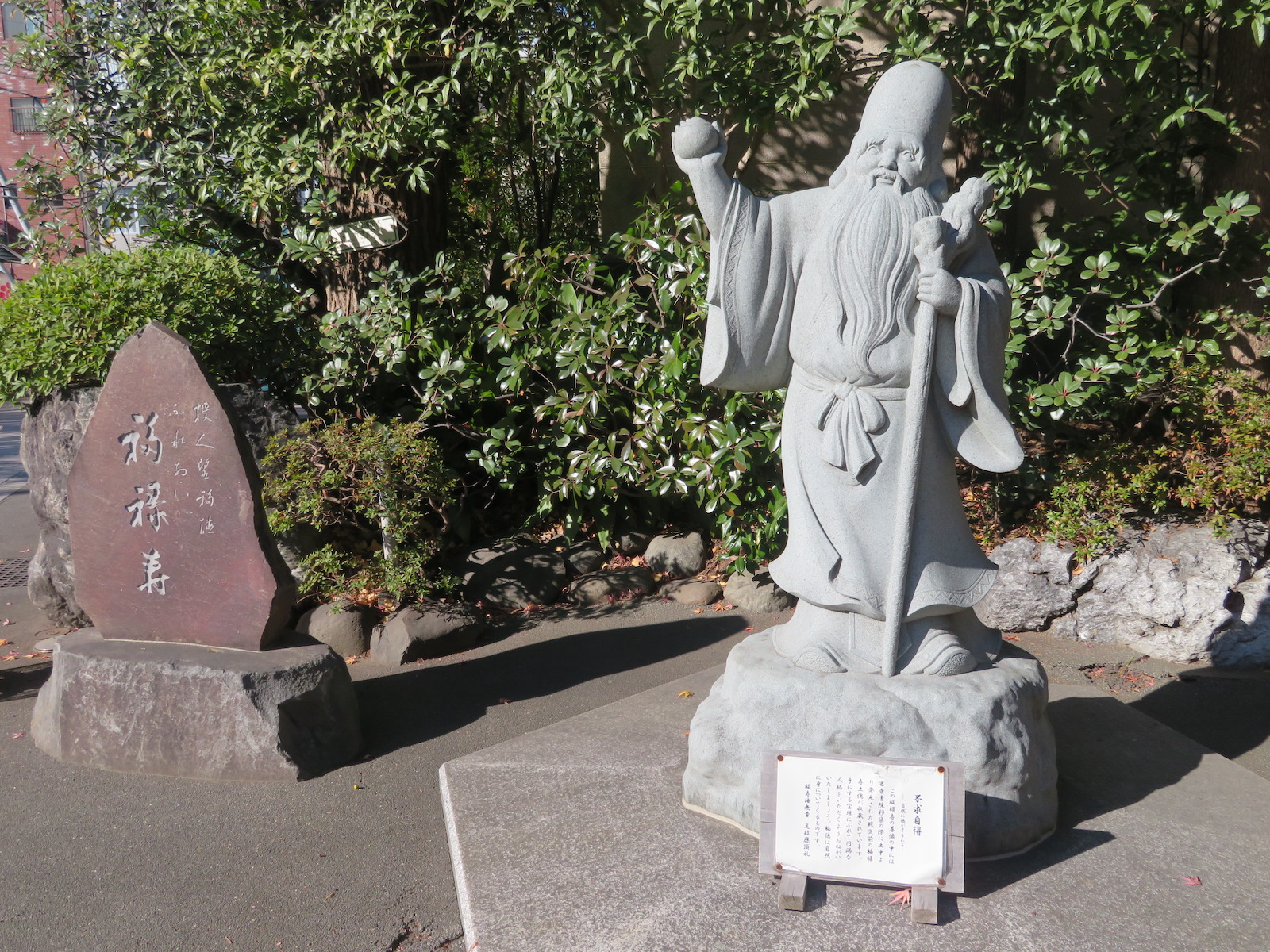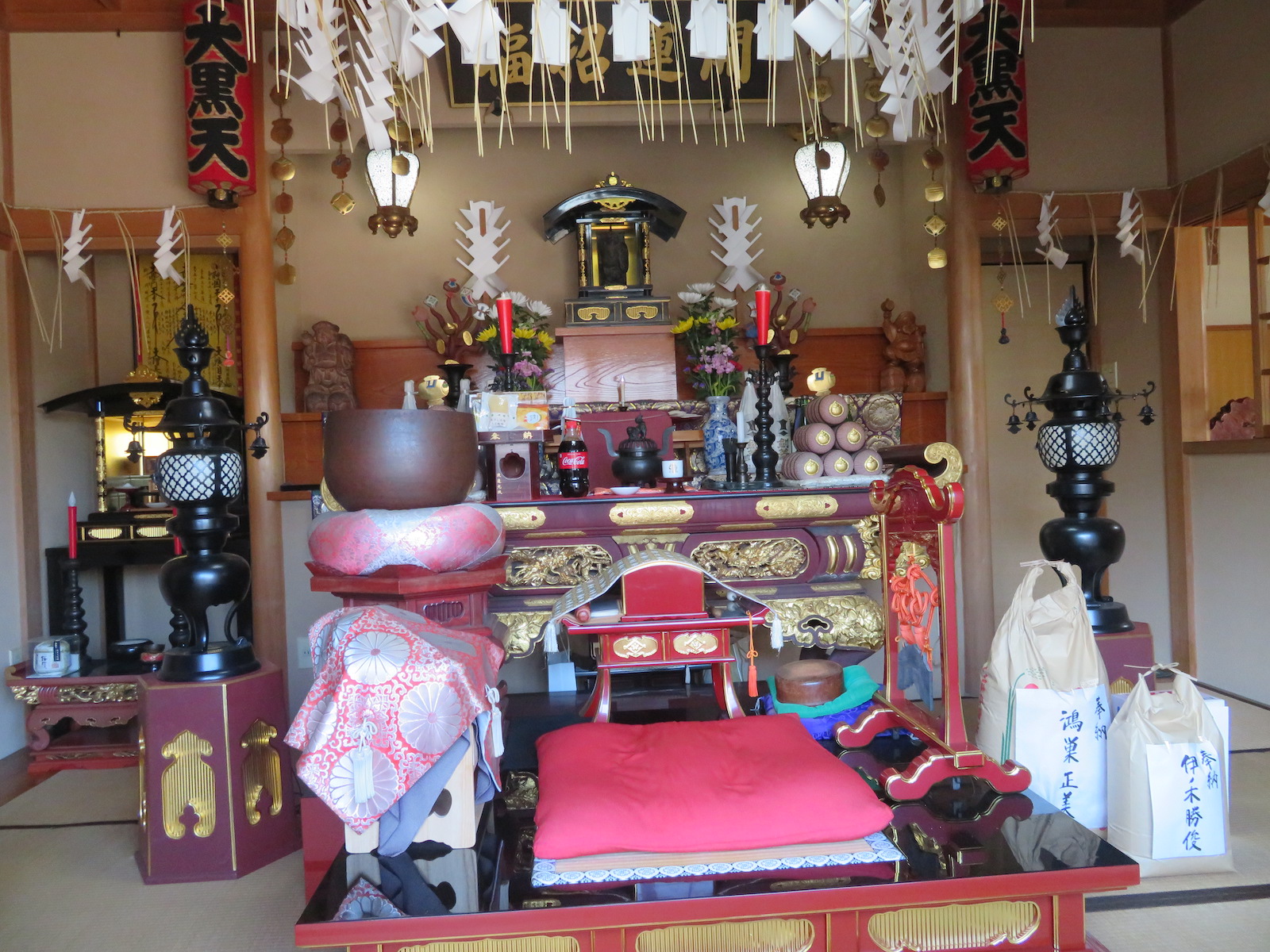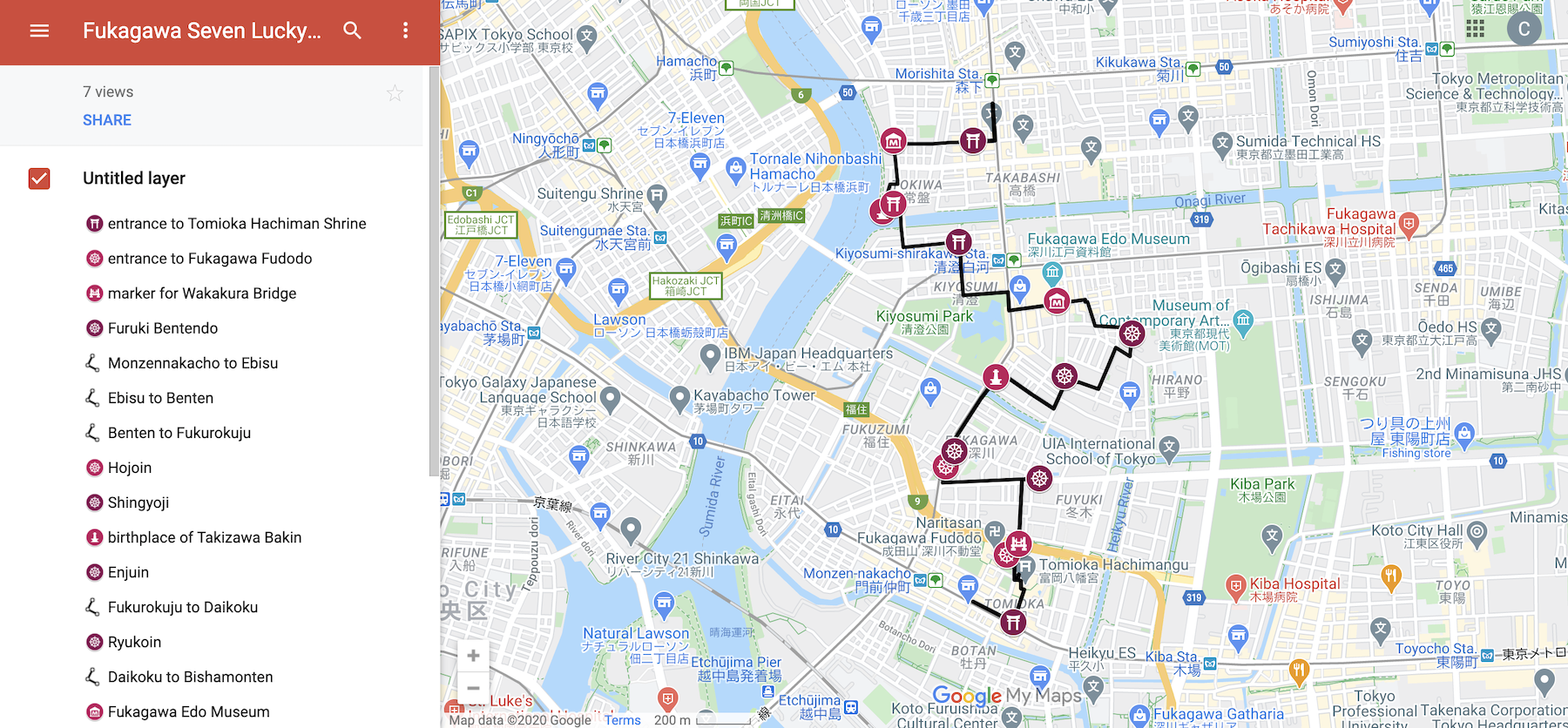Most of us are only too happy to see 2020 come to an end. And we all have high hopes for a better year in 2021.
In Japan, one popular New Year’s tradition calculated to bring good luck and assure a good year to come is a “pilgrimage” to a fixed set of shrines and temples to worship each of the seven lucky gods. Perhaps a pilgrimage is a good excuse to get out of doors at New Year’s when the weather is usually fine. This year, when everyone wants to get out but also needs to socially distance and stay safe, a walk with brief stops at shrines or temples might be just the ticket.
There are many seven lucky gods pilgrimage courses in Tokyo; this one is through the Fukagawa neighborhood on the left bank of the Sumida River, one of the oldest parts of Tokyo. Although the neighborhood’s roots go back to the early 17th century, the ravages of the 1923 Great Kanto Earthquake and the 1945 American fire bombing have left few old structures. Nonetheless, there are a number of interesting spots to visit on this walk of about 4.5 kilometers. Note that even though you’ll be outdoors most of the time, the shrines and temples ask all visitors to wear masks and practice other good hygiene measures.
The official pilgrimage should be completed between Jan 1 and Jan 7. During that period, there are a couple of options to commemorate your visits. One is a special shikishi (1,000 yen), a square of white cardboard that you can have inscribed at each stop (100 each). The other is a plastic bamboo branch (1,000 yen) to which you can attach ceramic bells representing each of the seven lucky gods, purchased at each site (300 each). These are available at all of the sites between 9 a.m. and 5 p.m. during the official pilgrimage period.
The walk is between Monzennaka-cho subway station and Morishita subway station. It doesn’t matter which end you start from; this article starts from Monzen Nakacho. Follow the map at the bottom of the article.
Tomioka Hachiman Shrine, just a couple of minutes from Monzennaka-cho station Exit 1 is your first stop. Founded in 1627, it is regarded as the home of sumo wrestling and is also famous for its summer water festival. It is a popular spot for hatsumode, the first prayers of the new year, and is likely to be the most crowded destination on this course.

The god to collect here is Ebisu, the god of fishermen and merchants. In the 17th century, the waterfront was very near here (landfill has changed things), making it logical that Ebisu is found here. He resides in the middle of three small shrines just west of the main Tomioka Shrine. A small booth nearby offers inscriptions and ceramic bells in the shape of Ebisu.
Departing from the west torii of the shrine, you may want to drop by Fukagawa Fudodo, a busy and popular Buddhist temple. Not far along you’ll find two granite pillars, once the anchors of a bridge across the Aburabori river, which now runs underground.

The second stop on the pilgrimage is Fuyuki Bentendo, a small temple founded in 1705 and associated with Benten, the goddess of music and the arts, the only female of the seven lucky gods. The small temple itself is a postwar reconstruction. Like most Benten shrines, the original had a pond, now crowded out by the city.
Shingyoji, on Kiyosumi-dori, is the third destination. Here you will find Fukurokuju, whose name means “happiness, wealth and longevity” (just about everything you’d want for 2021). The temple has been at this location since 1633, but its structures are all post-war. Just before reaching Shinkoji, drop in to Hojoin, another 17th century Buddhist temple and home to a splendid statue of Enma, the fearsome red god of hell who judges good and evil.

Shortly after crossing the Sendaibori River, you’ll see a curious bronze marker in the shape of a stack of Japanese books with old-style binding. This marks the birthplace of Takizawa Bakin (1767-1848), well-known and prolific author of historical novels.
Enjuin, the fourth stop, is dedicated to Daikoku, the god of wealth. The temple was founded in 1730 and contains a number of wooden and stone statues of Daikoku standing atop rice barrels, a traditional symbol of wealth.

This section of Fukagawa is what is known as a tera-machi or temple district; it feels like every third building is a temple. In fact, to reach your next destination, take a shortcut through the grounds of Joshinji, a Nichiren Buddhist temple already busy preparing for the 800th anniversary of Nichiren’s birth in 2022.
The next destination, Ryukoin, has been on its site since 1682. It is the home of Bishamonten, the god of war (and bringer of peace). One interesting feature of these temple grounds is the multi-layered stone pagoda, a battered relic held together by baling wire, yet another victim of the 1923 earthquake.

It’s nearly a kilometer to the Fukugawa Inari Shrine to visit the sixth god. Along the way, consider stopping at the Fukagawa Edo Museum, with its excellent reproduction of 18th century Edo city streets. The museum is open 9:30-17:00; closed Jan 1. Admission: 400 yen (consider buying the combo ticket for 500 yen to also get admission to the Basho Museum later in this course).
You’ll also pass by Kiyosumi Garden, a traditional Japanese-style strolling garden well worth a visit, but alas, closed throughout the 2021 New Year’s period.
Fukugawa Inari Shrine, like all Inari shrines, is dedicated to the god of the harvest. However, it is also home to Hotei, god of happiness and contentment and protector of small children. Like Santa Claus, Hotei carries a cloth bag containing a never-ending supply of gifts. Hotei is also regarded as the Bacchus of the pantheon, so perhaps his affiliation with this Inari shrine is because sake is produced with rice.

There are several interesting sights on the way to the final stop on this pilgrimage. First, cross the Onagi River via Mannenbashi (the bridge of 10,000 years). Now of steel construction, the first bridges on this site were traditional arched wooden bridges, now memorialized in famous woodblock prints. This is the spot where the Onagi River flows into the Sumida River; during the Edo Period, a guardhouse stood here to monitor river traffic.
Matsuo Basho (1644-1694), famed poet, traveler and travel writer, also lived in a hermitage overlooking the spot. It is said that his students planted banana trees here in his honor (the pen name Basho is the old Japanese word for banana, his favorite tree). There is now a small garden with banana trees and a statue of Basho on the site, which affords beautiful views of the river and the city.

You’ll also pass by the Basho Museum, banana trees growing at the front. The museum has detailed displays of manuscripts and memorabilia associated with the life of this most famous poet. Of special interest are the replica of his simple hermitage and a map of his travels around Japan. There is a QR code-enabled simple English guidance available for smartphone users. The museum’s hours are the same as those of the Fukagawa Edo Museum; single admission is 200 yen if you didn’t purchase the combi ticket earlier.
At last you come to Fukugawa Shinmeigu to collect the seventh lucky god, Jurojin, the god of longevity. If you’ll lasted this long, you deserve him! It is said that the founders of this shrine, also the early 17th century founders of the village that grew to become this neighborhood, were named Fukagawa, hence the name of the neighborhood.

Having completed this pilgrimage, these seven lucky gods should smile upon you during the year to come. May it be a good one for you!
Vicki L Beyer, a regular Japan Today contributor, is a freelance travel writer who also blogs about experiencing Japan. Follow her blog at jigsaw-japan.com.

 Take our user survey and make your voice heard.
Take our user survey and make your voice heard.















2 Comments
Login to comment
Patricia Yarrow
These are in my neighborhood. Thank you for the explanations! Have long wondered about them. Wonderful way to spend the new year.
Sar
Amazing post for ending the year on a positive not. thank you very much.